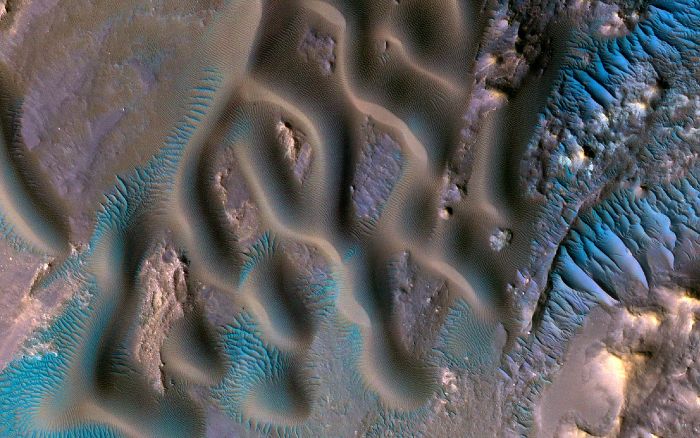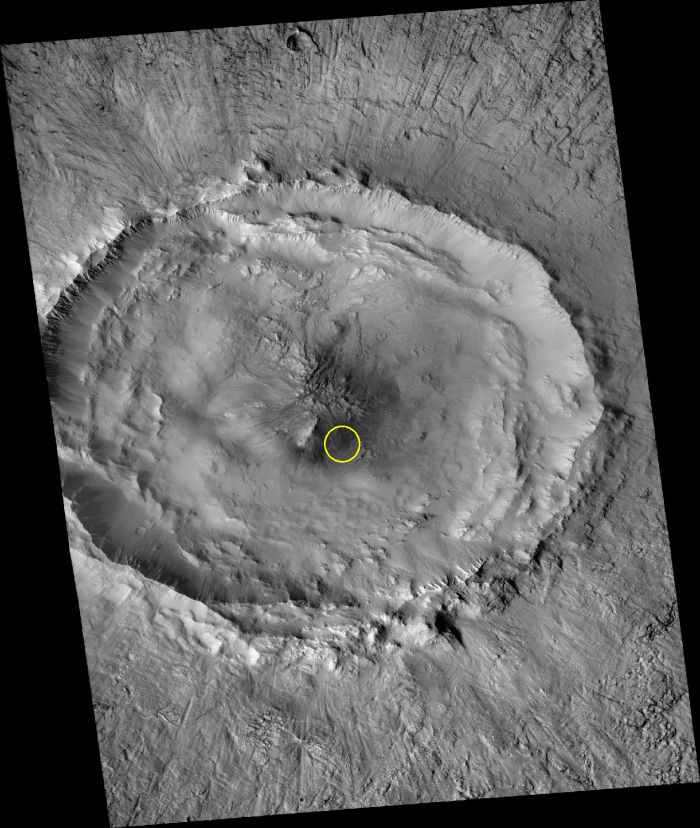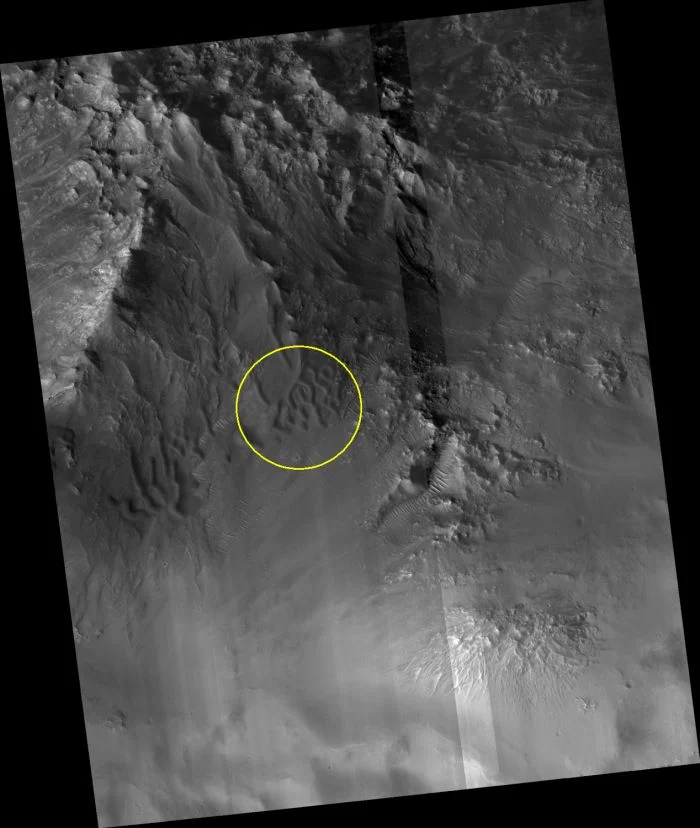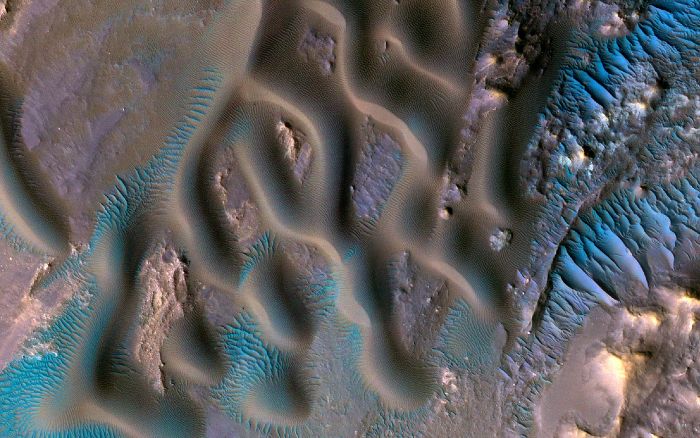The Martian landscape is covered in what appears to be ripples of blue sand, which gives the Red Planet an even more bizarre appearance.
However, the eye-catching coloring is deceptive. You need to go a little deeper than its makeup to find genuine beauty.
The landscape, which was captured by NASA’s Mars Reconnaissance Orbiter earlier this year, was processed using a technique known as “fake color,” which turns subtle differences in light wavelengths into stunning color palettes that are impossible to miss.
This improvement is incredibly beautiful, but it wasn’t made to give Mars a little extra glitz. Planetary scientists are given a highly useful tool to study the geological and atmospheric processes going place much below the orbital height of MRO by processing the data in this fashion, which shows differences in regions and features on the Martian surface.

Dunes and Transverse Aeolian Ridges in the Gamboa Crater on Mars. (NASA/JPL-Caltech/University of Arizona)
Where Is This Crater Located?
The Gamboa Crater in the northern hemisphere of Mars is the area that MRO has observed here. Each pixel in the image, which has a stunning resolution, is equivalent to 25 centimeters (9.8 inches).
Read More: Welcome To Mars City: Complete Map Of This Elon Musk’s Ambitious Project
The Ridges Of Mars

Many of the larger hills have only a few feet separating the smallest ripples from one another on their tops. They eventually combine to produce a series of little mounds that radiate out from the surge of dunes at intervals of about 10 meters (30 feet).

These medium-sized structures are brilliantly coloured in blue, making it simpler to spot their distinctive patterns amidst a sea of ripples and huge, sandy waves.
These medium-sized structures, also known as Transverse Aeolian Ridges, or TARs, are constructed of very coarse-particle sand. NASA claims that the TARs and big dunes’ increased hues indicate ongoing erosive processes.
Conclusion
According to a statement on the NASA website, “The mega-ripples look blue-green on one side of an enhanced color cut-out while the TAR seems brighter blue on the other.
“This could be the result of the TAR actively moving against the wind’s power, removing dirtier dust and enhancing their brightness. These many characteristics can all be used to determine the direction of the wind at the time they formed.
The ability to explore such diversity so closely together enables us to understand their relationships and compare and contrast aspects to learn more about their composition and formation.”
